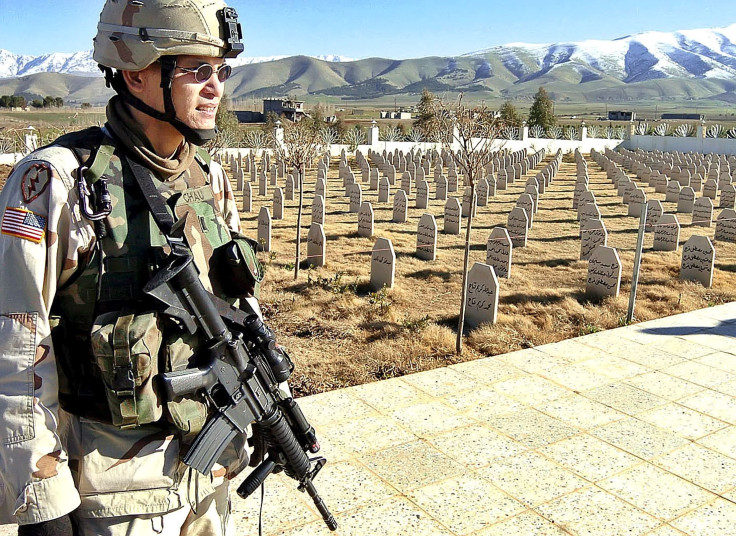Weapons Of Mass Destruction Did Exist In Iraq, And Now Exposed American Troops Are Suffering

American troops secretly discovered roughly 5,000 chemical warheads, shells, or aviation bombs hidden by the Iraq government, The New York Times reported Wednesday. Redacted intelligence documents and its own interviews with participants reveal some 17 Americans and seven Iraqi police officers were exposed to nerve or mustard agents. However, the actual number of exposed troops, a matter of classified information, is slightly higher. While dwelling on the secrecy of Army operations, the Times takes care to underline the fact that many of these remnants of Hussein’s chemical arsenal were found in territory now controlled by Islamic State (IS).
The public was misled for a decade, Jarrod L. Taylor, a former Army sergeant, told the Times, adding, “I love it when I hear, ‘Oh there weren’t any chemical weapons in Iraq.’ There were plenty.” In fact, Taylor witnessed two infantry soldiers being burned while destroying mustard shells. All the secrecy surrounding the discoveries of these weapons meant some of the affected soldiers did not receive proper medical care, according to the newspaper.
Political implications abound. The view that chemical weapons caches did not exist in Iraq was an all-too-common belief in the years following President Bush’s call to arms. On Jan. 27, 2003, a UN press release reported its weapons inspectors had examined 106 locations and found "no evidence that Iraq had revived its nuclear weapons program." In a February 2003 briefing transcribed by the Guardian, Dr. Hans Blix, executive chairman of United Nations Monitoring, Verification and Inspection Commission (UNMOVIC), told the UN security council, “How much, if any, is left of Iraq's weapons of mass destruction and related proscribed items and programs? So far, UNMOVIC has not found any such weapons, only a small number of empty chemical munitions, which should have been declared and destroyed.” At that same briefing, he said some weapons and chemical agents had not been accounted for. “One must not jump to the conclusion that they exist,” Blix told the council. “However, that possibility is also not excluded.”
Worldwide, news organizations suggested the Times’s earliest reporting on Iraq’s program of weapons of mass destruction was unprofessional — the reporters had been too gullible in believing their sources. In September 2002, for instance, the newspaper said Iraq had obtained aluminum tubes for its nuclear weapons program. In May 2004, the Times editors themselves assessed their paper’s reporting on Saddam Hussein’s arsenal as flawed and too reliant on suspect sources of intelligence. They also noted at that time they would continue to investigate in order to correct any “misinformation” they may have spread.
Today, the Times reports most of the arsenal found by allied forces after 2003 could no longer have “been used as designed” as all the weapons had been manufactured before 1991. When they “ruptured,” the weapons “dispersed the chemical agents over a limited area,” according to those interviewed, causing damage. Seemingly, though, the still viable materials could have been repurposed into the manufacture of new weapons.
Today’s article appears to vindicate much of the Times’s earliest reporting on weapons of mass destruction, yet the current perspective is nuanced enough to justify its subsequent reversal. “The American government withheld word about its discoveries even from troops it sent into harm’s way and from military doctors,” reports the Times, adding “the scale of the United States’ encounters with chemical weapons in Iraq was neither publicly shared nor widely circulated within the military.” In fact, an Army report summary submitted to Congress in 2006 stated that since 2003, allied forces in Iraq had recovered about 500 chemical weapons, a figure below the actual number. That incorrect number has never been publicly updated, according to the Times.



























